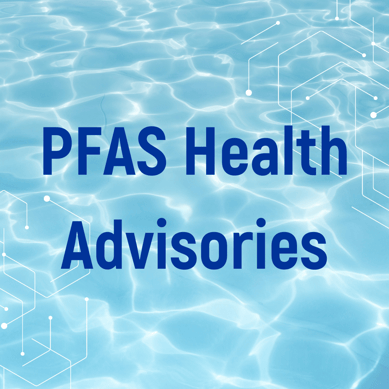The world of PFAS contamination, testing, and regulation has been moving forward at breakneck speed as the U.S. EPA continues to implement its PFAS Strategic Roadmap for 2021-2024. To help Pace® customers stay up to date, we’re compiling the latest news and developments we think should be on everyone’s radar.
Want Pace® News and Views delivered to your inbox? Subscribe here.
The Debate Over PFAS Health Advisories Heats Up
 Normally, it’s PFAS regulations that draw the most fire, but this summer, the EPA’s interim health advisories are collecting a lot of heat. Quick recap: In June, the EPA issued new interim health advisories for PFOA, PFOS and first-time, final health advisories for PFBS and GenX. We covered these advisories in a recent post and added comments in our June 29th News and Views. The bottom line is that the revised health advisories for PFOA and PFOS are orders of magnitude lower than the previous advisories, and that’s raised some concerns.
Normally, it’s PFAS regulations that draw the most fire, but this summer, the EPA’s interim health advisories are collecting a lot of heat. Quick recap: In June, the EPA issued new interim health advisories for PFOA, PFOS and first-time, final health advisories for PFBS and GenX. We covered these advisories in a recent post and added comments in our June 29th News and Views. The bottom line is that the revised health advisories for PFOA and PFOS are orders of magnitude lower than the previous advisories, and that’s raised some concerns.
Since then, numerous groups have sounded off, not so much for or against the need for health advisories, but on the EPA’s decision-making process. Here are a couple of recent examples:
“The EPA’s announcement is a game changer, and it should have huge ripple effects in terms of how New York regulates PFAS in drinking water."
- Rob Hayes, Director of Clean Water for Environmental Advocates
“While [the interim health advisories] are non-regulatory levels, they will have sweeping implications for policies at the state and federal levels. Getting the science right is of critical importance.”
- The American Chemical Council
The undersigned associations strongly urge you not to include provisions in National Defense Authorization Act for Fiscal Year 2023 (FY 23 NDAA) that would circumvent the existing regulatory process for PFAS.
- U.S. Chamber of Commerce letter to Congress
What all three of these comments acknowledge is that, while the EPA’s health advisories aren’t enforceable regulations, they often lead to enforceable regulations at both the state and federal levels. If you’re a water quality or compliance professional, this debate is certainly one to keep an eye on.
States Step Up Drinking Water Sampling

Even with UCMR 5 sampling set to begin next year, many states are stepping up their sampling programs in light of the EPA’s interim health advisories. For example, as reported in WaterWorld, the Arizona Department of Environmental Quality (ADEQ) plans to conduct PFAS testing for all public water systems in the state that have not been tested for PFAS under current UCMR requirements or through ADEQ’s existing PFAS screening program.
Pace® is an approved UCMR 5 lab, and we conduct PFAS testing for public water systems (and other entities) in all 50 states. If you have questions about how to harmonize your UCMR 5 compliance program with other PFAS sampling requirements in your state, reach out to us. We’d be happy to help you sort through the details.
Polluter Pays Becoming a Theme at the State Level
In our June 8th News and Views, we highlighted the liability debate surrounding PFAS under CERCLA. Quick recap: Once the EPA designates PFOA and PFOS as hazardous substances under CERCLA, property owners could be held responsible for clean-up. It’s a concept called “polluter pays” that seems reasonable on the surface but can create a legal quagmire for property owners that weren’t responsible for the initial contamination.
Polluter Pays is catching on at the state level, too. For example, in April of this year, Vermont was the first state in the union to pass a bill that includes exposure to toxic releases as a cause of personal injury cases. This particular law provides medical monitoring provisions for victims exposed to PFAS and other toxics pollution without requiring individuals to show evidence of harm. As awareness of PFAS contamination and its detrimental impact on human health grows, we expect to see more laws like these passed at the state level.
Don’t Forget the PFAS Precursors
.png?width=374&name=PFAS%20Health%20Advisories%20(1).png) Once PFOA and PFOS are designated hazardous substances under CERCLA, industry, wastewater professionals, and water quality managers are going to need to familiarize themselves with the world of “PFAS precursors.” These are PFAS compounds that can be converted into terminal compounds during processes such as traditional wastewater treatment.
Once PFOA and PFOS are designated hazardous substances under CERCLA, industry, wastewater professionals, and water quality managers are going to need to familiarize themselves with the world of “PFAS precursors.” These are PFAS compounds that can be converted into terminal compounds during processes such as traditional wastewater treatment.
One of the examples Stephen Sommerville, Pace® PFAS Technical Director, gave in his recent webinar, The Evolving Landscape of PFAS Test Methods, is 8:2 Fluorotelomer sulfonic acid (8:2 FTS). This compound can be converted into PFBA, PFPeA, PFHxA, and most critically given the current regulatory landscape, PFOA. Stephen goes into PFAS precursors in more detail in the discussion on the TOP Assay Test Method at about 13:55 in the webinar.



